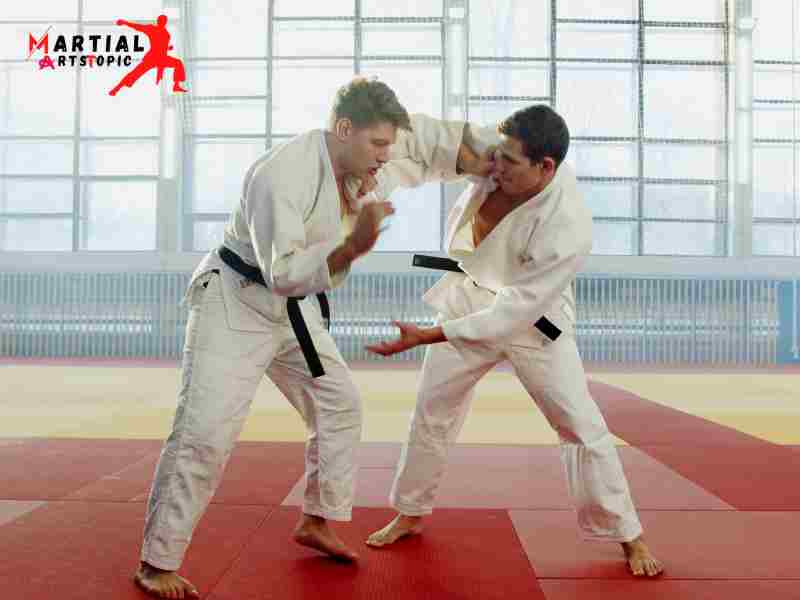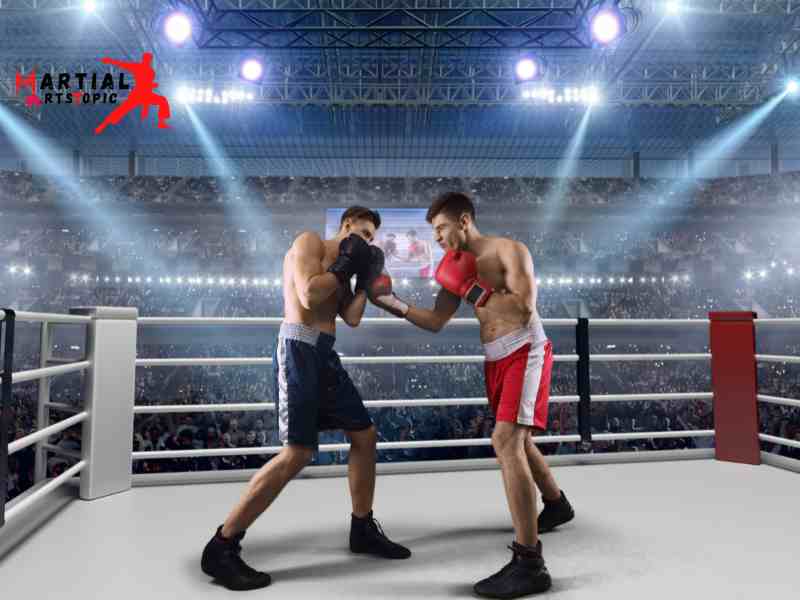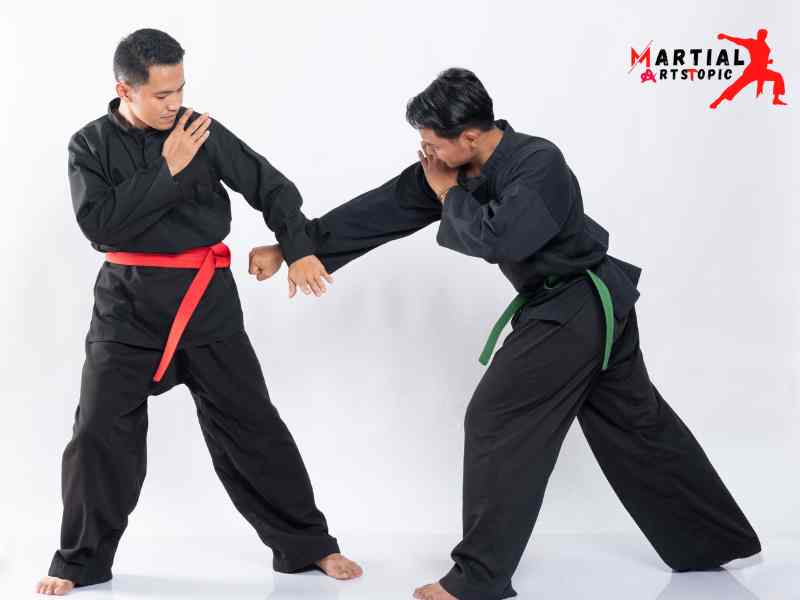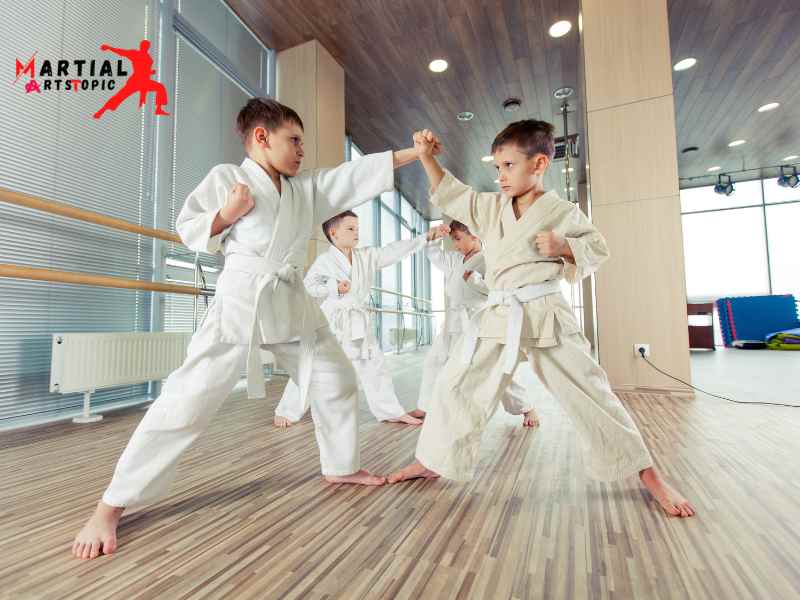
The Art of Karate and Transform Your Life True Power
The art of Karate is a transformative journey that has the power to change your life. Karate is not just a martial art; it is a way of life that instills discipline, focus, and self-confidence. Through rigorous training, you will develop physical strength, agility, and coordination. But the true power of Karate lies in its ability to shape your character and enhance your mental well-being. The practice of Karate teaches you to face challenges head-on, to persevere in the face of adversity, and to cultivate a powerful spirit. It instills in you a sense of respect, not only for your opponents but also for yourself and others. Karate is a path of self-discovery,
What is karate?
Karate is a traditional martial art that originated in Okinawa, Japan. It focuses on striking techniques, such as punches, kicks, knee strikes, and elbow strikes, as well as open-hand techniques. Karate also emphasizes the importance of mental discipline, self-control, and respect for others. This martial art is practiced for self-defense, physical fitness, and personal development. It is often characterized by its various forms or patterns of movement called “kata,” which practitioners use to perfect their techniques and movements. Karate has evolved into different styles and schools, each with its own unique approach and techniques. Overall, karate offers a holistic approach to physical and mental well-being, making it a popular martial art worldwide.
The origins and history of karate
Karate, also known as “empty hand,” is a martial art that originated in Okinawa, Japan. With a rich history dating back centuries, karate has developed from ancient self-defense techniques to a popular sport and form of physical fitness. The art of karate emphasizes striking techniques, such as kicks, punches, and knee strikes, as well as open-hand techniques like palm-heel strikes and knife-hand strikes. Through rigorous training and discipline, practitioners of karate develop not only physical strength but also mental focus and self-confidence. Today, they practice karate all around the world, attracting individuals of all ages and backgrounds who seek to enhance their overall well-being through this dynamic martial art.
Basic Techniques in Karate
Karate is a traditional Japanese martial art that focuses on striking techniques using punches, kicks, knee strikes, and elbow strikes. It also incorporates open-hand techniques such as knife-hands, spear-hands, and palm-heel strikes. These techniques are often combined with dynamic footwork and a strong stance to generate power and speed. Karate emphasizes the development of physical strength, mental discipline, and self-defense skills. It is a popular form of martial arts that provides a holistic approach to personal growth and self-improvement. If you’re interested in learning more about what karate is and its basic techniques, you’ve come to the right place.
Stances
Karate is a martial art that originated in Japan. It is a discipline that focuses on self-defense techniques and physical fitness. One of the key aspects of karate is the different stances used during training and combat. Stances in karate are fundamental positions that provide stability, balance, and power. They are the foundation upon which they built all movements. Whether it’s the front stance (zenkutsu dachi), back stance (kokutsu dachi), or horse stance (kiba dachi), each stance has its own purpose and benefits. By understanding and practicing the various stances in karate, practitioners can enhance their technique and overall performance.
Punches and strikes

Punches and strikes are fundamental techniques in the martial art of karate. Karate, also known as karate-do, is a Japanese martial art that focuses on striking techniques using various parts of the body, such as the fists, elbows, knees, and feet. Karate practitioners learn a wide range of punches and strikes to effectively defend themselves in combat situations. I executed these techniques with precision, speed, and power, making karate a dynamic and highly effective martial art discipline. Whether you are new to karate or curious about what karate entails, understanding the importance of punches and strikes is crucial to mastering this ancient martial art form.
Kicks
Kicks are an essential aspect of the martial art of karate. Karate is a discipline that originated in Okinawa, Japan, and focuses on striking techniques using various parts of the body, including the feet. Kicks in karate are not only powerful but also require precision and control. We use them for both offensive and defensive purposes, allowing practitioners to strike and defend themselves effectively. From front kicks to roundhouse kicks, karate kicks showcase the strength and agility of the martial artist. So, if you’re curious about what karate is all about, kicks play a vital role in this exhilarating martial art.
Blocks and defenses
Blocks and defenses are essential aspects of karate. Karate is a martial art that focuses on self-defense and striking techniques. In karate, blocks are defensive movements used to protect oneself from incoming attacks. By using blocks, karate practitioners can deflect and neutralize their opponent’s strikes effectively. These defensive techniques are crucial in maintaining balance and control during a fight. Karate emphasizes the importance of proper body positioning and timing to execute blocks with precision. Mastery of blocks and defenses is an integral part of learning karate and becoming a skilled practitioner in this martial art.
Karate for Kids: Instilling Confidence and Discipline from an Early Age
Karate for kids is a powerful way to instill confidence and discipline from an early age. Karate, also known as the “way of the empty hand,” is a traditional Japanese martial art that focuses on self-defense techniques. It not only teaches children physical skills but also enhances their mental and emotional strength. Through karate training, kids learn important values such as respect, perseverance, and self-control. By mastering various karate techniques and participating in sparring sessions, children gain confidence in their abilities and develop discipline in their daily lives. Karate for kids is much more than just learning kicks and punches; it is a holistic approach to personal growth and character development.
Karate Training and Dojos
Karate is a traditional Japanese martial art that focuses on striking techniques using punches, kicks, knee strikes, and elbow strikes. It also incorporates open-handed techniques such as knife-hands and spear-hands. Karate training emphasizes discipline, respect, and self-improvement. In dojos, which are traditional training halls, students learn katas (pre-arranged forms), sparring, and self-defense techniques. The rigorous training in a karate dojo not only improves physical fitness but also cultivates mental strength and self-confidence. Karate training is a holistic approach to personal development, making it a popular choice for people of all ages.
Importance of training
Karate training is of utmost importance for individuals looking to enhance their physical and mental well-being. What is karate? It is a martial art that not only teaches self-defense techniques but also cultivates discipline, focus, and self-confidence. Engaging in karate training not only helps develop strength, flexibility, and coordination but also instills valuable life skills such as resilience and perseverance. Whether you are a beginner or an advanced practitioner, karate training offers a holistic approach to personal growth and empowers individuals to overcome challenges both on and off the mat. Invest in karate training today and experience the transformative benefits it can bring to your life.
Finding a reputable dojo
When it comes to finding a reputable dojo for karate, it’s essential to know what karate is and what to look for in a dojo. Karate is a martial art that originated in Japan and focuses on self-defense techniques using punches, kicks, and strikes. To find a reputable dojo, start by researching local karate schools and checking their credentials and reputation. Look for experienced instructors who have proper certifications and a strong background in karate. Consider visiting the dojo in person to observe classes and assess the overall atmosphere and safety measures in place. By conducting thorough research and visiting various dojos, you can find a reputable karate school that suits your needs.
Training schedule and progression
The training schedule and progression in karate play a crucial role in mastering the art and honing one’s skills. Karate, also known as the martial art of empty hand, requires discipline and dedication to achieve proficiency. The training schedule encompasses various techniques, katas, and kumite (sparring) sessions, ensuring a well-rounded development of strength, agility, and mental focus. With a structured progression plan, practitioners gradually advance through different belt levels, symbolizing their growth and understanding of Karate principles. Whether you’re a beginner curious about what karate entails or a seasoned practitioner aiming for mastery, following a well-defined training schedule and progression is essential.
Karate Belts and Ranking System
Karate Belts and Ranking System: A Comprehensive GuideKarate, a traditional martial art form, is renowned for its unique belt and ranking system. Whether you’re a beginner or an experienced practitioner, understanding the significance of karate belts is essential to your martial arts journey. In this comprehensive guide, we’ll delve into the intricacies of the karate belt system, its history, and the meaning behind each belt color.
Understanding the Belt Colors
In karate, the belt colors typically progress from white to black, signifying the journey from a novice to a master. Each belt color represents a specific stage of learning, discipline, and mastery. Let’s explore the significance of each belt color:
- White Belt: The white belt symbolizes purity, innocence, and a beginner’s mind. It represents the starting point of one’s journey in karate, where the practitioner is like a blank canvas, ready to absorb knowledge and develop the fundamental techniques of the art.
- Yellow Belt: As practitioners advance from the white belt, the yellow belt represents the first rays of sunlight, signifying the growth and progress made in mastering the basic techniques of karate.
- Orange Belt: The orange belt signifies the increasing intensity of the sun as the practitioner’s skills and understanding of karate deepen. It represents a pivotal stage where the practitioner starts to refine their techniques and develop a deeper understanding of the art.
- Green Belt: The green belt symbolizes growth and vitality, representing the continued evolution and progression of the practitioner’s skills. At this stage, the practitioner begins to embody the foundational principles of karate with greater proficiency.
- Blue Belt: The blue belt represents the sky, signifying the expanding horizons and limitless potential of the practitioner. It is a stage where the practitioner further refines their techniques and prepares for the advanced stages of their journey.
- Purple Belt: The purple belt represents the transition from intermediate to advanced levels, signifying the deeper understanding and commitment to the art of karate. Practitioners at this stage demonstrate a high level of proficiency and dedication.
- Brown Belt: The brown belt symbolizes maturity and stability, reflecting the practitioner’s journey towards mastery. It is a stage where the practitioner’s skills are honed to a high level, preparing them for the ultimate challenge – the black belt.
- Black Belt: The black belt is the pinnacle of achievement in karate, representing mastery, expertise, and a profound understanding of the art. Attaining the black belt is not the end of the journey, but rather the beginning of a new chapter in the practitioner’s pursuit of continuous improvement and growth.
Different styles of Karate

Karate is an ancient martial art that has been practiced and refined over centuries, resulting in a wide variety of different styles. Each style of Karate has its own unique techniques, principles, and training methods, making it a diverse and fascinating discipline to explore. In this blog post, we’ll delve into the rich tapestry of Karate styles, shedding light on their distinct characteristics and origins.
Shotokan Karate
One of the most widely practiced styles of Karate, Shotokan Karate emphasizes powerful, linear techniques and dynamic stances. Developed by Gichin Funakoshi, Shotokan Karate places a strong focus on kihon (basic techniques), kata (forms), and kumite (sparring). Its emphasis on strong, precise movements and disciplined training methods has made it a popular choice for practitioners around the world.
Wado-Ryu Karate
Wado-Ryu Karate, founded by Hironori Ōtsuka, is characterized by its fluid, evasive movements and emphasis on body shifting and redirection. This style places a strong emphasis on tai sabaki (body movement), making it well-suited for close-quarters combat and self-defense situations. Wado-Ryu Karate’s unique blend of striking and grappling techniques sets it apart as a versatile and adaptive style.
Kyokushin Karate
Known for its emphasis on full-contact sparring and rigorous physical conditioning, Kyokushin Karate is often regarded as one of the most challenging and demanding styles of Karate. Founded by Masutatsu Oyama, this style places a strong emphasis on developing physical and mental toughness, making it a popular choice for individuals seeking a highly disciplined and intense training experience.
Goju-Ryu Karate
Characterized by its circular movements, close-range techniques, and emphasis on breathing exercises, Goju-Ryu Karate is often described as a “soft-hard” style. Founded by Chojun Miyagi, this style places a strong emphasis on internal energy cultivation and combative applications of traditional Chinese martial arts principles. Goju-Ryu Karate’s unique blend of hard and soft techniques makes it a fascinating and deeply philosophical style to study.
Shito-Ryu Karate
Shito-Ryu Karate, founded by Kenwa Mabuni, is known for its diverse range of techniques, including both hard and soft movements. This style places a strong emphasis on kata practice, with a focus on precision, fluidity, and balance. Shito-Ryu Karate’s comprehensive curriculum and emphasis on well-rounded skill development make it an appealing choice for practitioners seeking a balanced and holistic approach to martial arts training.
Benefits of Practicing Karate

Karate, a traditional martial art originating from Okinawa, Japan, offers a wide range of physical, mental, and emotional benefits for practitioners of all ages. The practice of Karate involves a combination of kicks, punches, and defensive techniques, providing a holistic approach to self-defense, fitness, and personal development.
Physical Fitness and Strength
One of the most evident benefits of practicing Karate is the improvement in physical fitness and strength. The rigorous training sessions, which include various forms of cardiovascular exercises, strength training, and flexibility drills, help practitioners build endurance, enhance muscle tone, and improve overall physical performance. Through consistent practice, individuals can experience significant improvements in their agility, balance, and coordination, contributing to a healthier and more active lifestyle.
Self-Defense Skills
Karate equips individuals with practical self-defense skills that are essential for personal safety and security. By learning effective striking techniques, blocks, and evasive maneuvers, practitioners develop the ability to protect themselves in real-life situations. This not only instills a sense of empowerment but also provides the confidence to navigate challenging or potentially dangerous circumstances with a greater sense of control and assurance.
Mental Discipline and Focus
The practice of Karate emphasizes mental discipline, focus, and self-control. Through the repetition of techniques, katas (forms), and sparring drills, practitioners learn to cultivate a disciplined mindset, enabling them to stay calm and composed under pressure. This mental fortitude extends beyond the dojo and into everyday life, promoting a greater capacity for concentration, decision-making, and emotional regulation.
Stress Relief and Emotional Well-Being
Engaging in Karate can serve as an effective outlet for stress relief and emotional well-being. The physical exertion and mental concentration involved in training help to alleviate stress, tension, and anxiety, promoting a sense of inner peace and tranquility. Additionally, the supportive and encouraging environment of the dojo fosters camaraderie and a sense of community, which can positively affect one’s overall emotional health and social well-being.
Self-Confidence and Empowerment
As individuals progress in their Karate training, they experience a notable increase in self-confidence and self-esteem. Setting and achieving personal goals, overcoming challenges, and honing new skills contribute to a sense of accomplishment and empowerment. This newfound confidence transcends the physical realm and permeates various aspects of life, from professional endeavors to personal relationships, instilling a positive and assertive mindset.
Karate for Self-Defense: Empowering Yourself with Martial Arts
Karate, a Japanese martial art, is not just about physical combat, but also about empowering oneself with self-defense skills. It involves using strikes, kicks, and blocks, along with mental focus and discipline, to protect oneself from potential threats. Karate gives individuals the ability to defend themselves in dangerous situations, enhancing their confidence and sense of personal security. By practicing karate, one can learn effective techniques to neutralize attackers and escape from dangerous situations. Whether you are a beginner or an advanced practitioner, karate provides you with the tools to enhance your self-defense abilities and empower yourself both mentally and physically.
Conclusion
Karate is a traditional martial art that promotes physical fitness, mental discipline, and self-defense skills. Its rich history and philosophy make it a valuable practice for people of all ages. Whether you’re interested in improving your physical health, learning self-defense techniques, or embracing the mental aspects of martial arts, karate offers a well-rounded approach to personal development. Embracing the principles of respect, discipline, and perseverance, karate provides a pathway to self-improvement and empowerment. So, whether you’re a beginner or an experienced practitioner, karate has something to offer for everyone.
